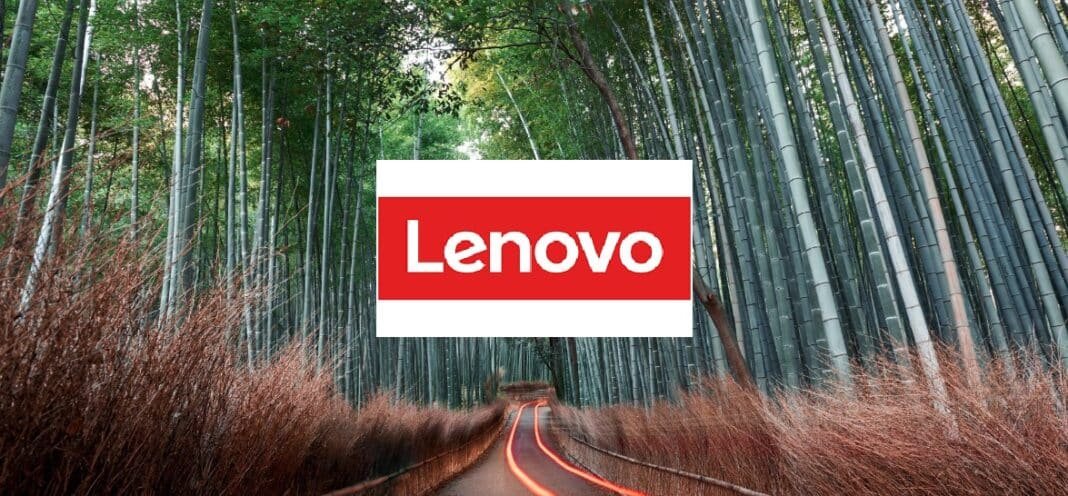Lenovo has revealed its goal to reach net zero greenhouse gas (GHG) emissions by 2050, which the Science Based Targets initiative (SBTi) approves, and entered a carbon credits deal with K+N.
With this commitment, Lenovo becomes the first PC and smartphone maker with an SBTi-approved net zero target. The tech firm is also one of only 139 companies in the world that has a climate goal validated by the Net Zero Standard.
Lenovo’s emissions reduction measurements will contribute to a wider body of data to better understand and tackle climate change.
The SBTi Net Zero Standard
Lenovo Chairman Yuanqing Yang remarked:
“In the fight against climate change, we believe collaboration and accountability are the two critical elements needed for collective success. We remain dedicated to following climate science, standardizing our measurements, and seeking ongoing validation for our targets and progress.”
Aligning net zero goals to the SBTi helps Lenovo to take a scientific, collaborative, and accountable means to cut emissions. Without doing so will make it hard to know when a net zero target is met.
SBTi is the first international body to standardize net zero and what it means as it relates to limiting global warming to 1.5°C. This net zero standard is also dynamic and responsive to firms’ collective efforts to decarbonize.
More importantly, SBTi holds companies accountable for their emissions reduction targets.
More than 4,000 companies worldwide are in the process of aligning their emissions reduction goals to SBTi’s methodology and validation processes.
CEO of the SBTi Luiz Amaral noted that the world needs rapid and deep emissions cuts to meet global net zero targets to avoid the most damaging effects of climate change. He further said:
“Lenovo’s net zero targets match the urgency of the climate crisis and set a clear example that their peers must follow.”
How Lenovo Will Hit Its 2050 Net Zero Goal
Lenovo commits to reaching net zero emissions across its value chain by 2050. Its long-term target is to cut absolute GHG emissions across all three scopes – 1, 2, and 3 – by 90% by 2050 from a 2019 base year.
Hitting such an ambitious decarbonization goal requires the tech company to achieve the following reduction goals.
SBTi-Validated Near-Term Targets
- Reduce scope 1 and scope 2 GHG emissions by 50% by 2030, compared to 2019 levels
- Reduce emissions from the use of sold products by 35% on average for comparable products by 2030
- Cut scope 3 emissions from purchased goods and services by 66.5% per million US$ gross profit by 2030
- Cut scope 3 emissions from upstream transportation and distribution by 25% per tonne-km of transported product by 2030
The key strategies that Lenovo will adopt to reduce its GHG emissions are:
- Slashing the environmental impact of its products
- Applying innovation to increase the sustainability of its manufacturing
- Reducing emissions across its operations and value chain
These plans are outlined in Lenovo’s Journey to Net-Zero video series. It shows how the company’s experts are modifying business processes to hit net zero targets.
In addition to those emission reduction strategies, Lenovo is also working with other firms to further cut its carbon footprint. Its recent carbon credits collaboration with Kuehne+Nagel (K+N) perfectly shows this.
Lenovo and K+N Carbon Credits Deal
Lenovo works with Kuehne+Nagel to develop a green logistics service that allows its customers to buy carbon credits that fund the use of Sustainable Aviation Fuel (SAF).
- SAF is a fuel from sustainable inputs that reduces carbon emissions.
Via a purchase add-on service, customers can buy credits to cut the footprint of shipping the IT equipment and devices they purchase. They can then use those credits to fund the use of SAF that K+N provides.
There’s a specific amount of liters of SAF assigned to a purchased device. That figure equals the amount of reduction that the customer can claim under Scope 3.1. – emissions for purchased goods and services.
If this service is chosen, Kuehne+Nagel will issue the carbon credit or certificate to Lenovo and its customers. This certificate indicates the amount of SAF liters per purchased device for any logistics company.
Through K+N’s SAF concept, Lenovo finds a way to address carbon emissions across supply chains, which is in line with its SBTi targets. This further allows Lenovo customers to avoid emissions in product shipment regardless of the lane or airline.
This forged carbon credit deal with K+N enables Lenovo to pursue its net zero commitment – by “delivering sustainable products and solutions”, the head of global logistics at Lenovo, Gareth Davies said.
Lenovo is an early adopter of the science-based emissions reduction approach. It has received SBTi approval for its near-term 2030 goals in 2020. This has allowed the firm to road-test the first-of-its-kind Net Zero Standard.

